
Table of Contents
- Why Most Low Sugar Meal Plans Fail Your Biology
- Your Body’s Hidden 24-Hour Sugar Clock
- The Social Sabotage Nobody Talks About
- Strategic Nutrient Timing That Actually Works
- Making It Sustainable With Clean Solutions
- Final Thoughts
TL;DR
- Your chronotype (morning person vs. night owl) determines when your body processes sugar best – timing matters more than restriction
- Stress creates hidden sugar addiction cycles through cortisol that meal plans alone can’t fix
- Your gut bacteria decide if you’re a “sugar burner” or “fat burner” – requiring opposite approaches
- Family and workplace environments sabotage efforts through unconscious social patterns
- Eating fiber first, then protein, then carbs can reduce glucose spikes by 73%
- Specific mineral deficiencies (chromium, magnesium, zinc) create unstoppable sugar cravings
- Clean sweetener alternatives can actually improve metabolism while satisfying cravings
Why Most Low Sugar Meal Plans Fail Your Biology
Like most people, I used to think sugar cravings were just a willpower problem. I’d white-knuckle it through another “no sugar” meal plan, feeling like a failure every time I caved and ate half a sleeve of cookies at 3 PM. Turns out, I was completely wrong about how my own body works.
The problem isn’t that we’re weak or undisciplined – it’s that most meal plans treat everyone’s metabolism like it’s identical. Your body has its own unique rhythms, stress responses, and gut bacteria that determine how you handle sugar. When you work with these biological realities instead of against them, reducing sugar becomes natural rather than a constant battle.
Here’s something that blew my mind: sugar-sweetened beverages account for 24% of our added sugar intake. That means we’re not just fighting obvious desserts and candy – sugar is sneaking into our daily routines through drinks we don’t even think about.
Understanding your body’s unique sugar processing needs is crucial, especially when you’re trying to figure out how to find your carb tolerance and develop eating patterns that actually stick.
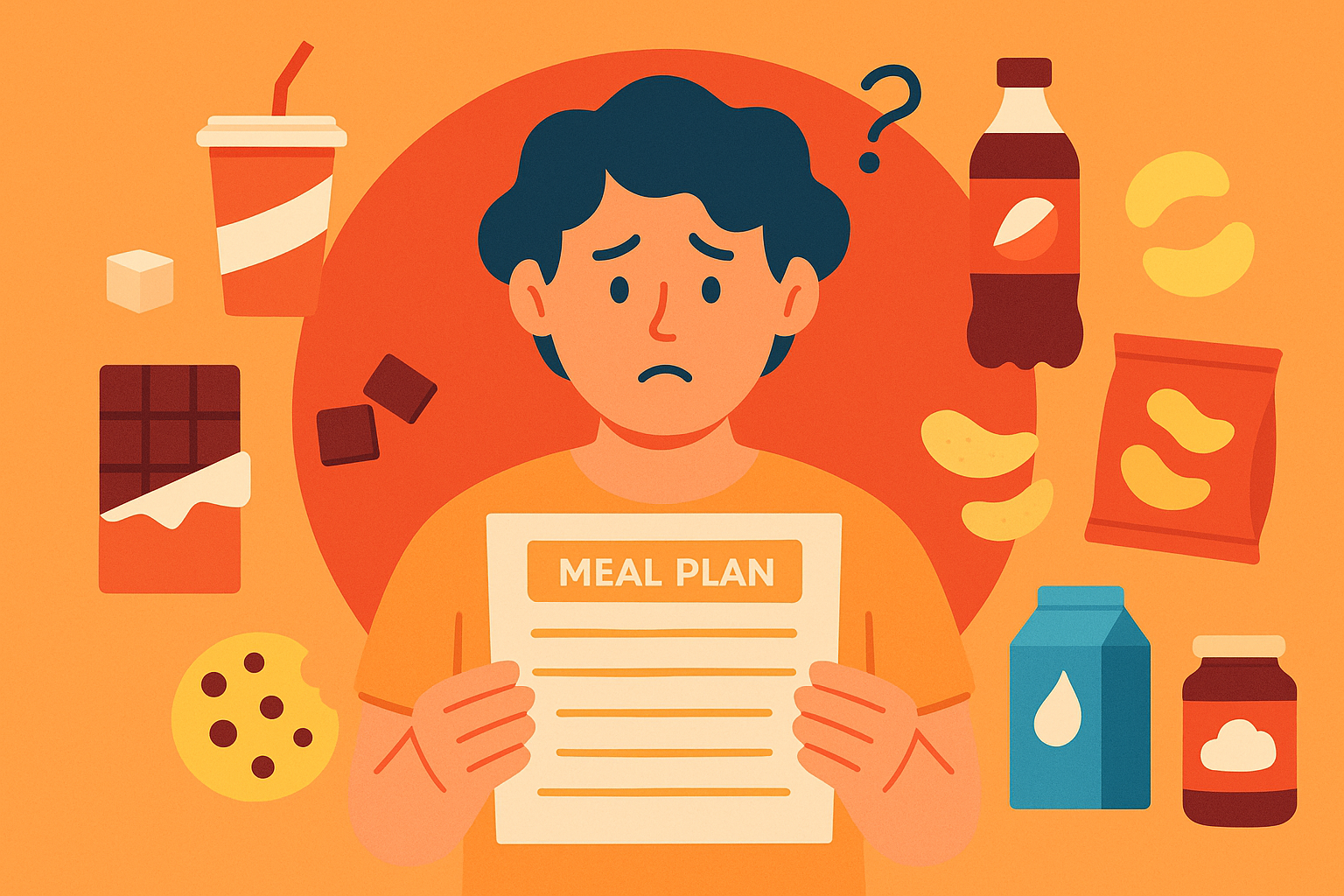
Your Body’s Hidden 24-Hour Sugar Clock
Here’s what I wish someone had told me years ago: your metabolism follows a precise 24-hour rhythm that completely changes how you handle sugar throughout the day. We’ve all felt it – that same snack that gives you steady energy at 10 AM might make you crash hard at 10 PM.
Your insulin sensitivity doesn’t stay the same all day. It fluctuates wildly from morning to night, which means timing what you eat can be just as important as what you eat. This biological clock doesn’t care about your meal preferences or when your family wants to eat dinner – it operates on ancient genetic programming that determines when your body expects fuel.
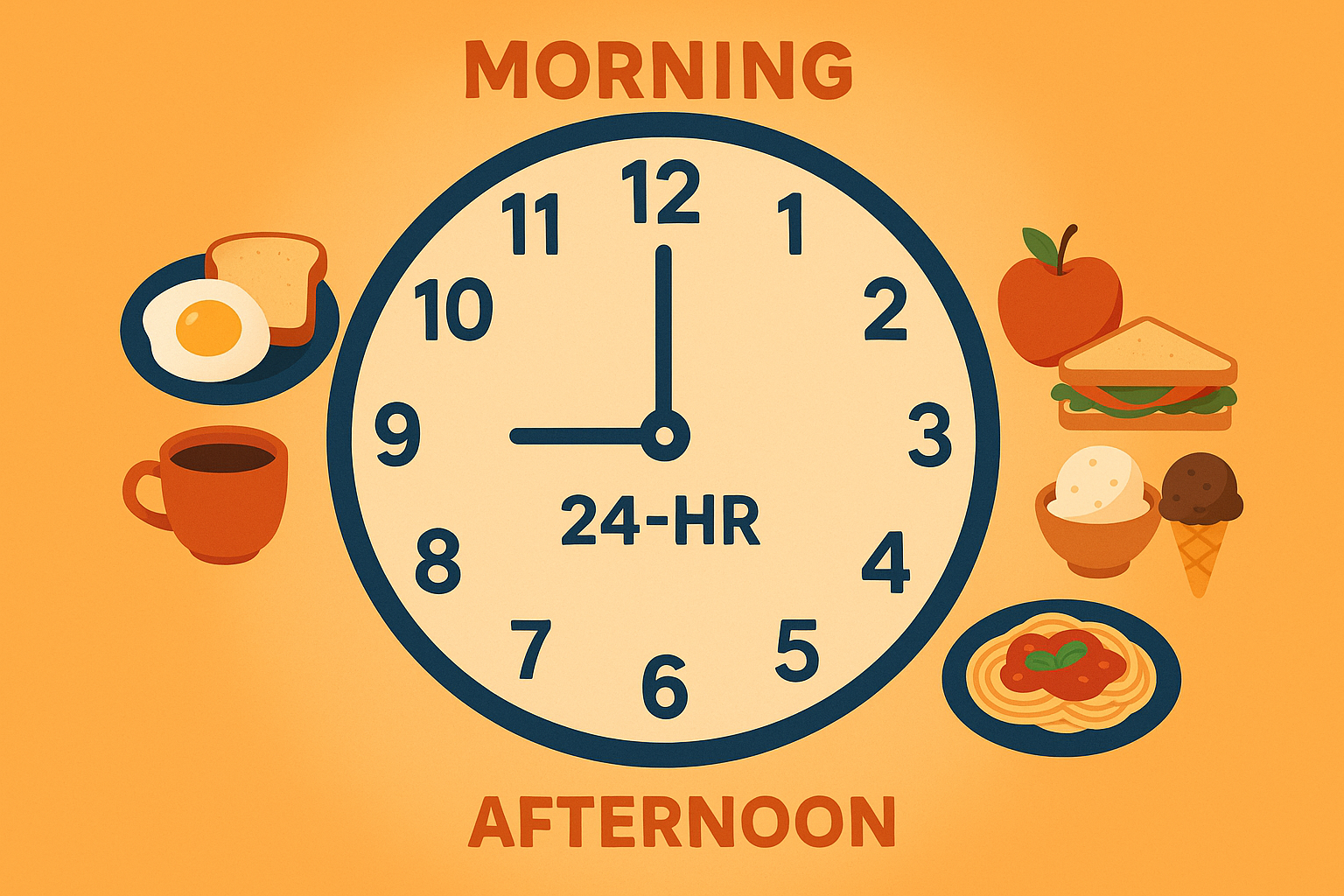
Morning People vs. Night Owls Process Sugar Differently
Your genetic chronotype isn’t just about whether you like getting up early – it literally determines when your body processes sugars most efficiently. If you’re a night owl trying to eat like a morning person, you’re basically fighting your own DNA.
This explains so much of what used to confuse me. Why could my friend eat pasta at 8 PM and feel fine, while the same meal left me tossing and turning all night? Why did morning workouts energize some people but make me feel drained for hours? We’re just wired differently.
| Chronotype | Optimal Carb Timing | Peak Insulin Sensitivity | Worst Sugar Window |
|---|---|---|---|
| Morning Lark | 6AM – 10AM | 7AM – 11AM | 8PM – 11PM |
| Night Owl | 12PM – 6PM | 2PM – 6PM | 6AM – 10AM |
| Moderate | 8AM – 2PM | 9AM – 3PM | 9PM – 12AM |
Your Dawn Phenomenon Needs Strategic Fuel
Between 4-8 AM, your body naturally raises blood sugar to wake you up – it’s called the dawn phenomenon. This creates a critical window where the wrong breakfast can set you up for afternoon sugar crashes, even if you think you’re eating healthy.
This morning cortisol surge explains why some people feel amazing skipping breakfast while others feel shaky and unfocused without substantial morning fuel. The timing of your morning meal is especially important if you’re trying intermittent fasting protocols, since women’s hormonal cycles require different approaches than the standard fasting advice you see everywhere.
My friend Sarah struggled with 3 PM energy crashes for months. She was a natural morning person trying to follow advice meant for night owls – eating light breakfasts and saving her carbs for dinner. Once she flipped it and had steel-cut oats with berries at 7 AM instead of pasta at 7 PM, her afternoon energy stabilized and those evening sugar cravings just… disappeared. It took about a week.
Evening Insulin Resistance Changes Everything
Here’s something that sounds backwards but makes total sense once you understand it: after 6 PM, most of us become naturally insulin resistant. This means that same salad that keeps you satisfied at lunch might leave you prowling the kitchen for something sweet at 9 PM.
This biological reality completely flips conventional dinner wisdom on its head. Those “light dinners” everyone recommends? They might actually be working against your natural insulin patterns. I’ve seen people eliminate their nighttime sugar binges just by adding more protein and healthy fats to their evening meals – working with their body’s evening insulin resistance instead of against it.
The Game-Changing Food Order Protocol
Okay, this next part might sound weird, but stick with me. The order you eat foods within a single meal can change your blood sugar response by up to 73%. We’re talking about the same exact foods, just eaten in a different sequence.
Eat your fiber first (salad, vegetables, even a fiber supplement), then protein, then carbs last. It creates a protective barrier in your digestive system that slows down sugar absorption. The timing amplifies the effect, making this simple change incredibly powerful.
Stress Creates Hidden Sugar Addiction Cycles
Your stress system has a direct hotline to your sweet tooth – and it’s not interested in your meal plan. Chronic stress doesn’t just make you want sugar; it creates actual neurochemical addiction cycles that make sugar feel necessary for survival.
I used to hide candy bars in my desk drawer and eat them during stressful conference calls. The shame was almost worse than the sugar crash that followed. Understanding the biochemical connection between stress and sugar cravings finally helped me realize my brain wasn’t weak – it was responding to legitimate chemical signals.
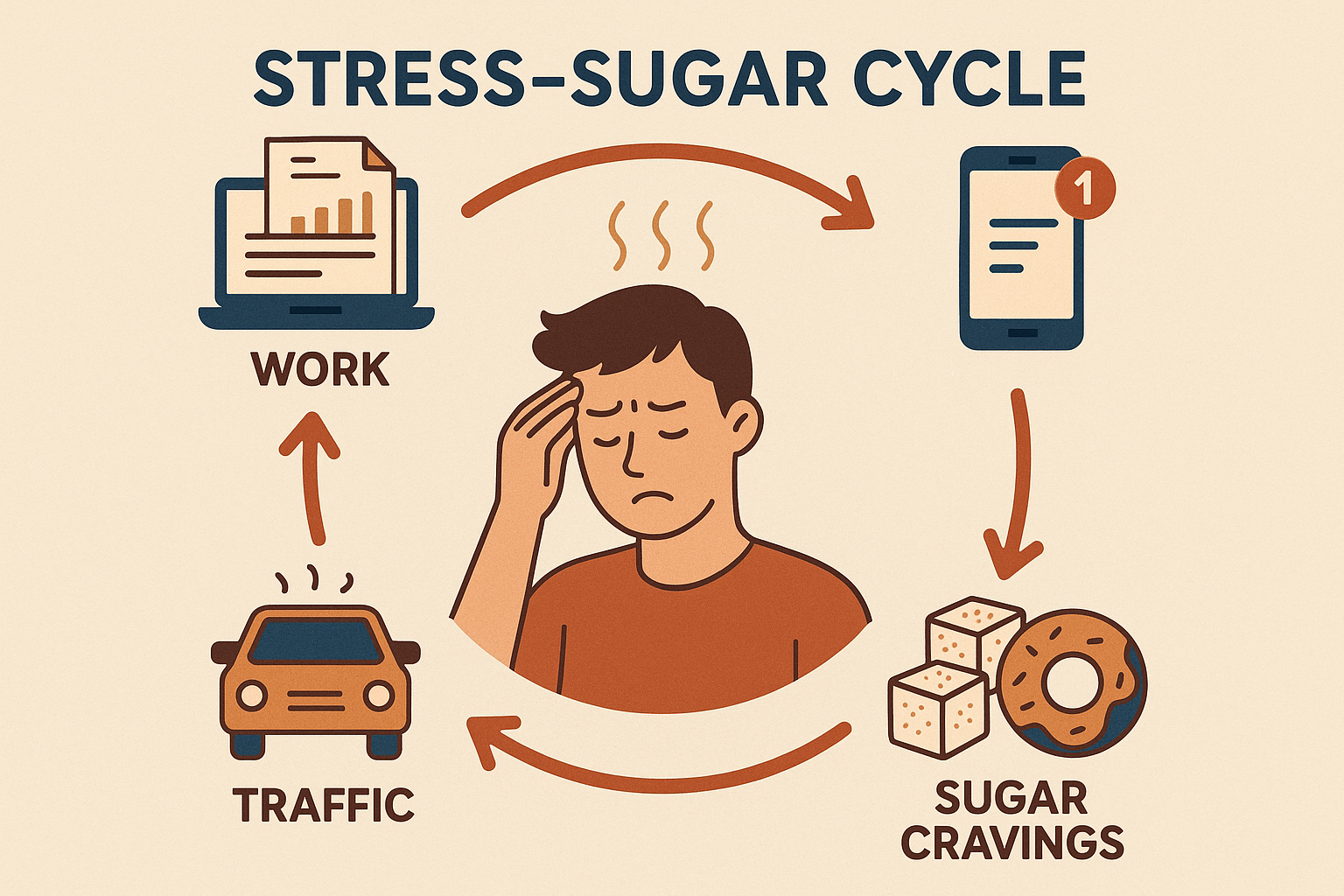
Your Stress Hormones Control Sugar Cravings
When you’re stressed, your brain releases a cascade of hormones that directly influence hunger and cravings. This system thinks you need quick energy to deal with whatever threat it perceives – whether that’s a work deadline or actual danger.
Your brain literally thinks sugar will help you survive the stress. It’s not weakness or lack of control – it’s ancient survival programming that doesn’t understand the difference between a saber-toothed tiger and your boss sending passive-aggressive emails.
Why Stress Eating Feels Addictive
Stress eating triggers the same dopamine pathways as addictive substances. This isn’t just “emotional eating” – it’s your brain seeking neurochemical balance through food. The more stressed you get, the more your brain craves that dopamine hit from sugar.
Breaking this cycle requires addressing the stress response itself, not just changing what you eat. I’ve watched people break decades-long stress eating patterns once they started treating the underlying neurochemistry instead of just trying to eat differently through willpower.
Your Gut Bacteria Determine Your Sugar Response
Here’s something that sounds like science fiction but is totally real: your gut bacteria are basically tiny roommates voting on what you should eat for dinner. And apparently, different people’s bacterial roommates have completely different food preferences.
Your microbiome composition determines whether you’re naturally a “sugar burner” or “fat burner.” If you’re trying to follow a meal plan designed for the opposite type, you’ll constantly fight cravings and energy crashes. It’s like trying to put diesel fuel in a gasoline engine.
Improving your gut health through drinking vinegars can help optimize your microbiome for better sugar metabolism and fewer cravings. Your bacterial populations essentially vote on what foods you crave and how efficiently you process different nutrients.
Bacterial Populations Decide Your Metabolic Type
Specific bacterial strains determine whether your body prefers burning sugar or fat for fuel. This is why some people thrive on higher carb diets while others feel amazing eating mostly fats and proteins – their gut bacteria are literally different species with different fuel preferences.
When you match your eating approach to your bacterial profile, everything becomes easier. Your energy stays steady, your appetite regulates naturally, and those constant cravings start to fade.
The Social Sabotage Nobody Talks About
We’ve all been there – you’re doing great with your eating plan, feeling confident and in control, then your coworker brings donuts to the meeting or your mom makes your favorite cookies. Suddenly you’re face-first in sugar, wondering what happened to your willpower.
The truth is, our social environments create unconscious patterns that can completely derail even the most well-intentioned meal planning. Your family dynamics, workplace culture, and friend groups all influence your food choices in ways you probably don’t even realize.
Family Sugar Patterns Run Deep
Food represents love, tradition, and connection in most families. When you change your eating patterns, it can feel emotionally loaded even when everyone intellectually supports your health goals. Your family’s food culture operates below conscious awareness, making change feel threatening to shared identity.
I’ve seen this play out so many times. You decide to cut back on sugar, but then it’s your nephew’s birthday party, or Sunday dinner at grandma’s house, or your partner brings home takeout after a long day. Food is woven into how families show care for each other.
When Partners Accidentally Sabotage Progress
Well-meaning partners often unconsciously sabotage sugar reduction through food gifts, restaurant choices, and emotional associations that worked in your relationship before. This isn’t malicious – it’s how couples maintain connection through shared food experiences.
My friend Mike’s wife brought home his favorite ice cream every Friday as a “treat for working hard.” When he asked her to stop, she felt rejected – like he was rejecting her way of showing love. They solved this by creating a new Friday ritual: walking to the farmer’s market together to pick out fresh fruit. Same connection, different food.
Breaking Generational Food Programming
Your family’s food traditions carry emotional weight that goes way beyond nutrition. They connect to love, belonging, and cultural identity. I’ve worked with people who felt guilty eating differently than their grandmothers, as if healthy choices were somehow disrespectful to family heritage.
Changing these patterns requires honoring the emotional significance while creating new traditions. It’s not about rejecting your family’s love – it’s about finding new ways to express and receive it.
Workplace Sugar Ecology Shapes Daily Choices
Office environments are basically sugar minefields designed by people who don’t understand human psychology. The afternoon donut run isn’t about hunger – it’s about belonging, stress relief, and social bonding wrapped up in sugar consumption.
Your workplace culture around food serves social and professional functions that can make avoiding sugar feel antisocial or even career-limiting. Nobody wants to be the difficult person who doesn’t participate in office celebrations.
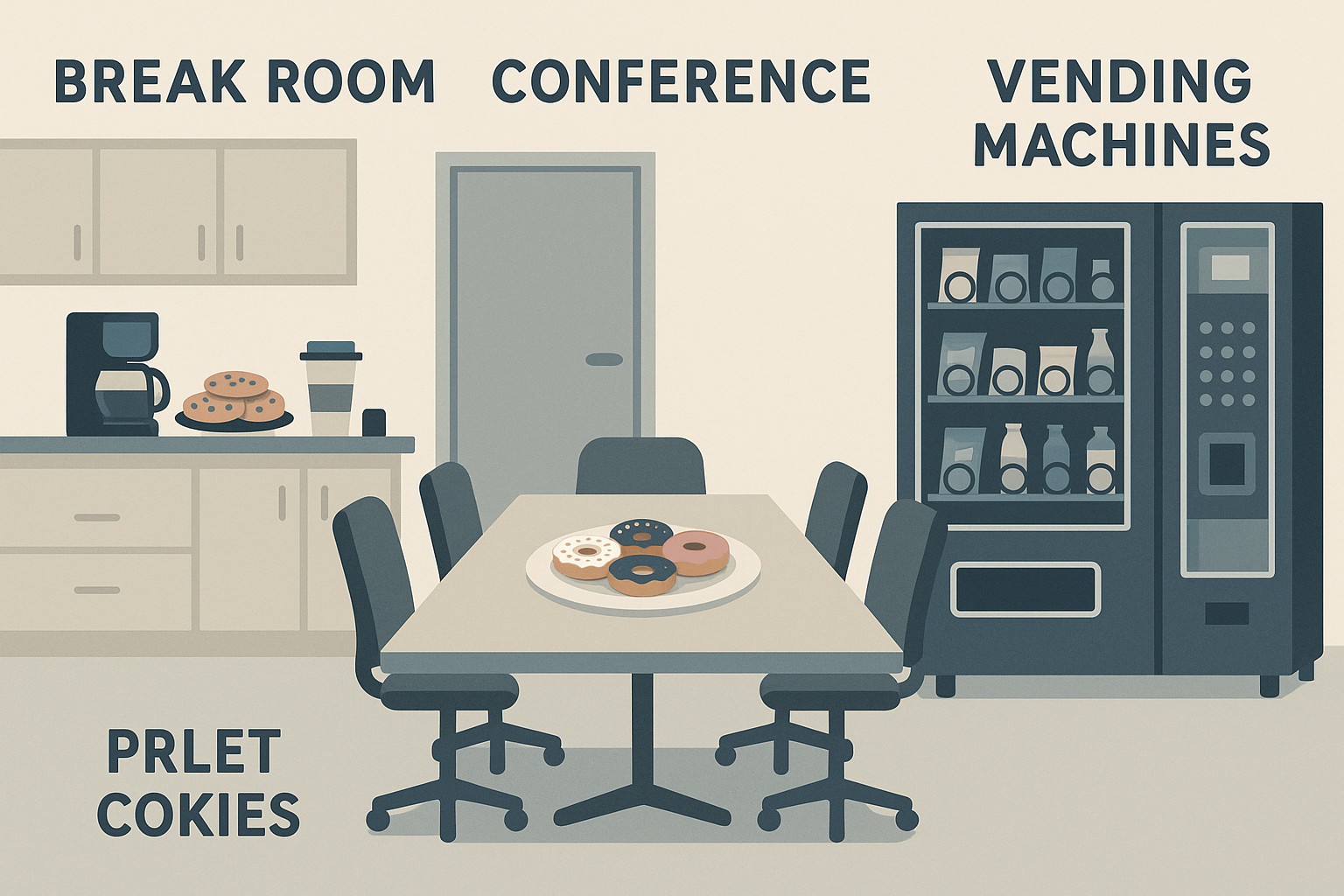
Conference Room Food Politics
Meeting pastries and celebration cakes serve team bonding functions that create professional pressure to consume sugar-heavy foods. Declining these offerings can feel like rejecting team membership or appearing difficult to work with.
I teach people to focus on the social aspect – take a small piece, engage in conversation, and quietly dispose of most of the food if needed. You maintain relationships without derailing your health goals. Most people don’t actually notice what you’re eating; they notice whether you’re participating in the social moment.
The Afternoon Vending Machine Ritual
The 3 PM vending machine visit represents more than hunger – it’s movement, social interaction, and mental reset wrapped in sugar consumption. Successful alternatives must address all these needs, not just the nutritional aspect.
I’ve seen people replace vending machine visits with brief walks, stretching sessions, or just standing conversations with colleagues. The key is maintaining the break ritual while changing the food component. Your brain needs that pause and social connection more than it needs the Snickers bar.
Commute Convenience Traps
Your daily commute creates habitual decision points where convenience often trumps intention. When you’re tired, hungry, and just want to get home, your brain defaults to the easiest available option – which is usually sugar-heavy convenience foods.
Map out your trigger zones and have specific alternatives ready. Pack emergency snacks in your car. Find healthy options near each temptation point. When decision fatigue hits, you need systems, not willpower.
Commute Sugar Trap Checklist:
- ☐ Identify 3 convenience stores on your route
- ☐ Pack emergency low-sugar snacks in your car/bag
- ☐ Find healthy alternatives near each temptation zone
- ☐ Plan specific responses to common trigger situations
- ☐ Set phone reminders for vulnerable times (3-4 PM)
Strategic Nutrient Timing That Actually Works
Look, I know you’re not meal prepping on Sundays while your kids nap peacefully. Most of us are grabbing whatever won’t spoil in the car between soccer practice and grocery shopping. But here’s the thing – timing what you eat can be more important than what you eat, and it doesn’t require perfect conditions.
The goal isn’t to become someone who never wants sugar again. It’s about not feeling controlled by those cravings, and actually enjoying the sweet things you choose to eat. Small changes in timing can create big changes in how your body responds to food.
Mineral Deficiencies Drive Sugar Cravings
Your body craves sugar when it lacks the minerals needed for proper glucose metabolism. It’s like your cells are screaming for help, but all you hear is “I want cookies.” Addressing specific mineral deficiencies often eliminates cravings more effectively than restricting sugar itself.
With 68% of shoppers encountering conflicting nutritional information on social media, it’s crucial to understand the actual science behind mineral deficiencies rather than relying on whatever wellness influencer is trending this week.
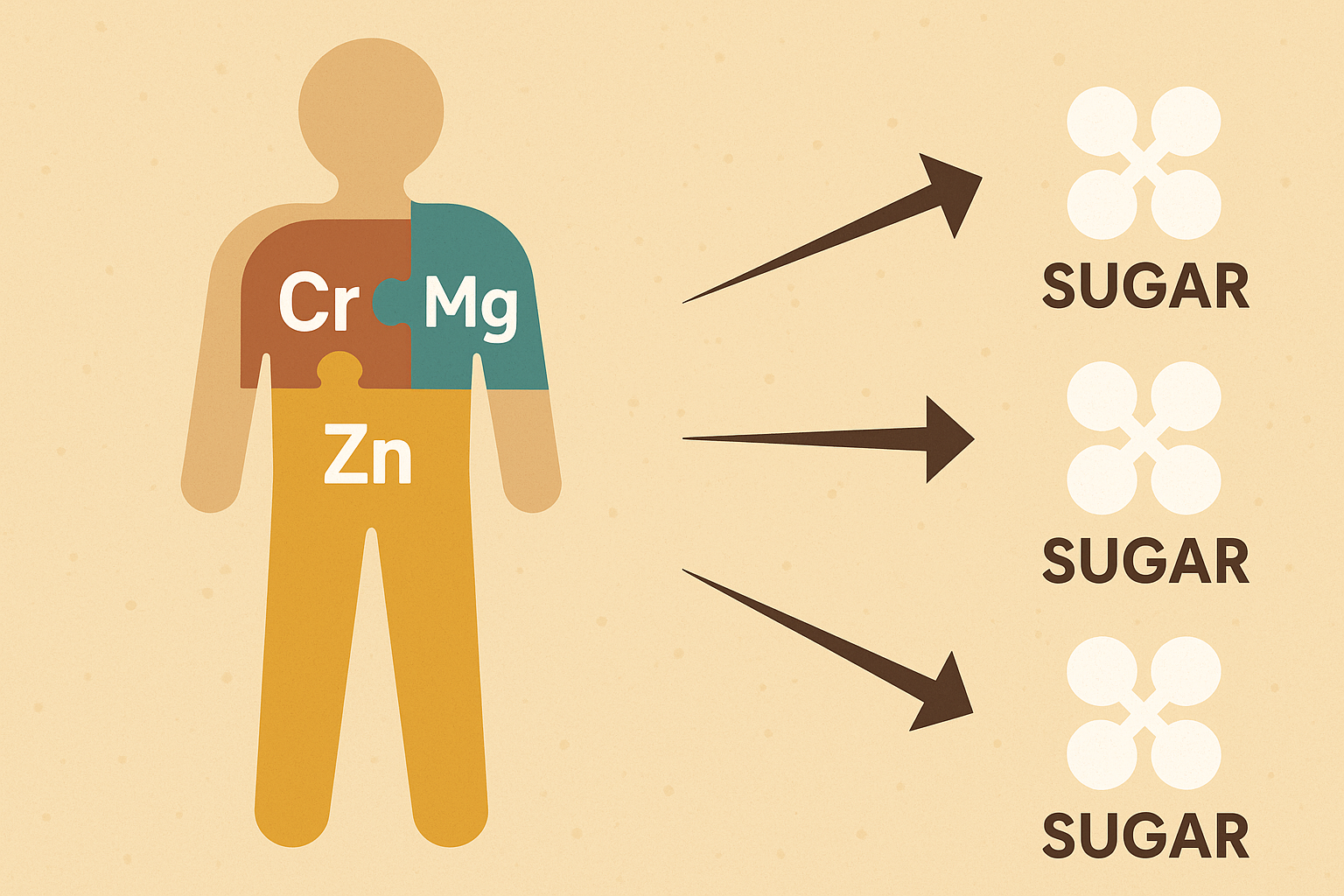
Chromium Timing Changes Everything
Taking chromium picolinate 30 minutes before your biggest carb meal can improve how your body handles glucose. The timing matters because chromium needs to be available when your body encounters carbohydrates.
I started doing this before my usual pasta dinner, and honestly? I stopped wanting seconds. It felt like magic, but it’s just science working in your favor. The post-meal crash that used to send me hunting for ice cream just… didn’t happen.
Magnesium’s Hidden Role in Sugar Metabolism
Most of us are magnesium deficient due to soil depletion and stress, which affects hundreds of processes related to how we handle sugar. But here’s the thing – not all magnesium supplements work the same way, and timing matters.
Magnesium glycinate taken before bed not only helps you sleep better but also supports overnight glucose metabolism. I started taking it and noticed I wasn’t waking up craving something sweet for breakfast. Your body does a lot of metabolic housekeeping while you sleep, and magnesium helps that process run smoothly.
Clean Sugar Alternatives That Heal
Some natural sweeteners actually provide health benefits beyond just replacing sugar. These aren’t “too good to be true” – they’re sweeteners that contain beneficial compounds your body can actually use.
| Sweetener | Glycemic Impact | Additional Benefits | Best Use Case |
|---|---|---|---|
| Monk Fruit | 0 | Supports gut bacteria, antioxidants | Beverages, baking |
| Allulose | 0-5 | Enhances fat burning, improves glucose tolerance | Desserts, cooking |
| Yacon Syrup | 35 | Prebiotic fiber, feeds beneficial bacteria | Drizzling, light sweetening |
| Stevia | 0 | May lower blood pressure, anti-inflammatory | Coffee, tea, small amounts |
Monk Fruit Supports Gut Health
Unlike artificial sweeteners that can mess with your microbiome, monk fruit actually feeds the bacteria that improve your sugar metabolism. It’s one of those rare wins where satisfying your sweet tooth actually helps your long-term health goals.
I switched to monk fruit in my coffee and noticed better digestion within a few weeks. It creates a positive cycle where using the sweetener improves your ability to handle natural sugars over time.
Allulose Actually Improves Fat Burning
This one sounds too good to be true, but allulose provides sweetness while potentially improving your body’s ability to burn fat for fuel. It doesn’t spike blood glucose, but it does satisfy sweet taste receptors.
What fascinates me about allulose is that it satisfies sweet cravings while possibly improving the very metabolic flexibility that reduces future cravings. It’s like getting immediate satisfaction that also helps your long-term goals.
Yacon Syrup Feeds Good Bacteria
Yacon syrup contains prebiotic fiber that feeds beneficial gut bacteria while providing natural sweetness with minimal blood sugar impact. You’re essentially improving your sugar metabolism every time you use it.
Start with small amounts since the prebiotic effect can cause digestive upset if you use too much initially. But once your gut adjusts, it’s a sweetener that actually supports your health goals instead of working against them.
Meal Sequencing Optimizes Metabolism
The order you eat different foods within a single meal can dramatically change your metabolic response. This requires no special foods or restrictions – just strategic timing of what you’re already eating.
Understanding that women should consume no more than 6 teaspoons (25 grams) of added sugar per day while men should limit intake to 9 teaspoons (36 grams) helps put meal sequencing benefits into perspective – optimizing how your body processes even small amounts of natural sugars becomes crucial when you’re keeping total intake properly limited.
Fiber First Creates Protective Barriers
Eating 5-10 grams of soluble fiber before other foods creates a protective barrier in your intestines that slows sugar absorption. This physical barrier prevents those rapid glucose spikes that trigger cravings and energy crashes.
The fiber doesn’t need to be a separate supplement – vegetables, fruits, or even a basic fiber supplement work. Understanding fiber’s importance goes beyond blood sugar control – fiber is crucial for overall health and supports multiple body systems simultaneously.
Protein Priming Improves Glucose Disposal
Eating protein 15 minutes before carbohydrates essentially prepares your metabolism to process carbs more efficiently. Your body releases hormones that improve glucose handling when it senses protein first.
My friend Jennifer transformed her family’s pasta nights by serving a small salad with olive oil first, followed by grilled chicken 15 minutes later, then the pasta. This simple sequencing reduced everyone’s post-meal crashes and eliminated the kids’ requests for dessert – their natural satiety signals started working properly.
Meal Sequencing Template:
- ☐ Start with 5-10g fiber (salad, vegetables, or supplement)
- ☐ Wait 10-15 minutes
- ☐ Consume 20-30g protein
- ☐ Wait another 10-15 minutes
- ☐ Add healthy fats (olive oil, avocado, nuts)
- ☐ Finish with complex carbohydrates
- ☐ Drink water throughout, avoid sugary beverages
Making It Sustainable With Clean Solutions
Some weeks, everything I’m about to share will work perfectly. Other weeks, you’ll eat cake for breakfast and that’s okay too. Progress isn’t perfection, and sustainability comes from working with your body’s natural systems rather than against them.
I’ve seen too many people succeed temporarily with extreme approaches only to rebound harder because they never addressed what was actually driving their sugar cravings in the first place. The goal is finding your own pattern, not following someone else’s perfectly.
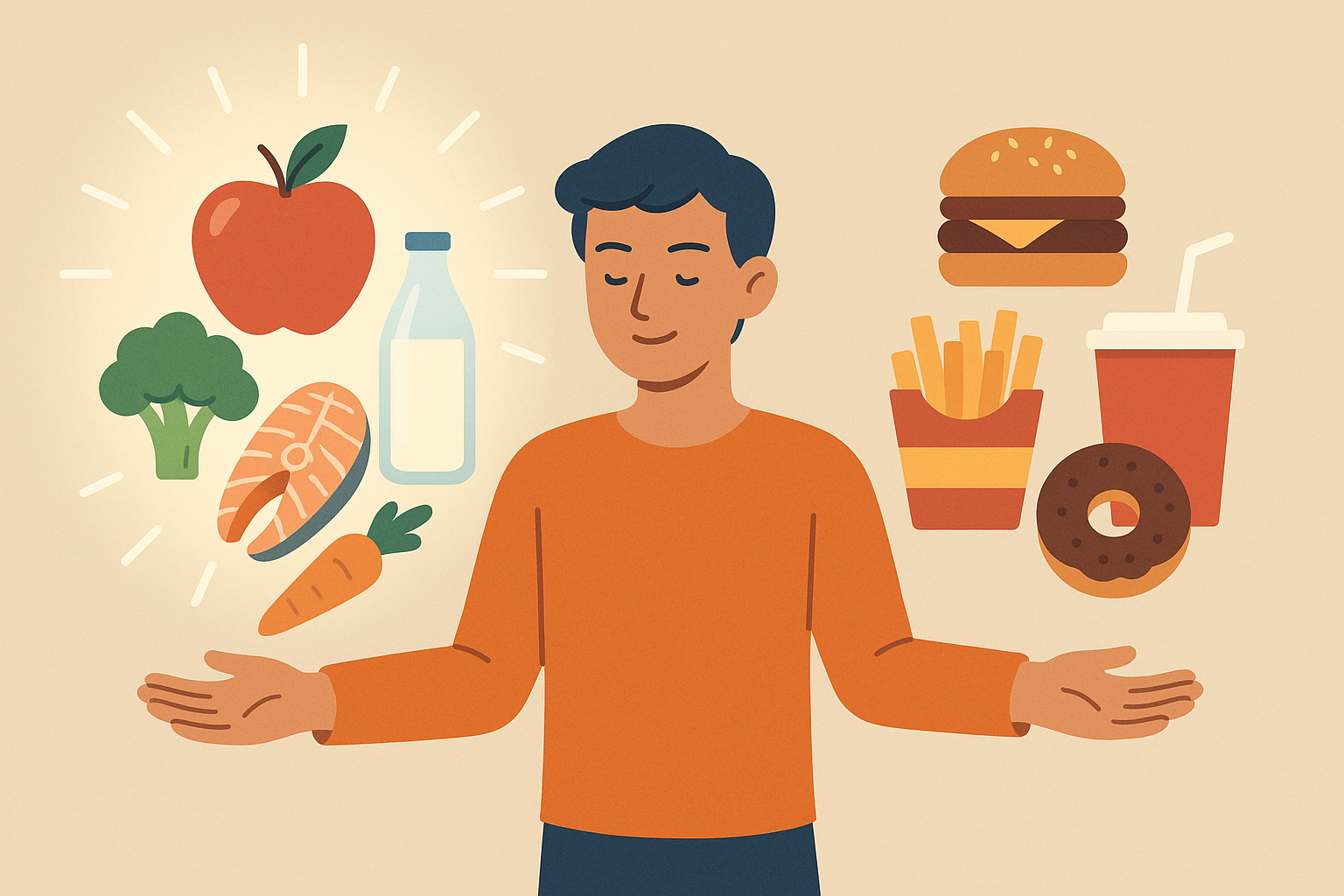
Clean Ingredient Standards Matter
Many commercial sugar substitutes contain fillers, artificial flavors, or processing chemicals that can actually worsen sugar cravings or create other health issues. You don’t want to trade sugar problems for chemical exposure.
With 60% of shoppers doubting their family nutrition choices due to conflicting information, having clear standards for evaluating sugar alternatives becomes essential for making confident decisions that support long-term health goals.
Transparent Sourcing and Minimal Processing
Choose sweeteners from companies that openly share their sourcing and manufacturing practices. If they won’t tell you how they make their product, that’s a red flag.
The best alternatives undergo minimal processing and come from sources you can actually understand. You shouldn’t need a chemistry degree to figure out what you’re putting in your body.
Supplement Integration for Synergistic Benefits
Combining meal timing strategies with high-quality supplements addresses the underlying factors that drive sugar cravings – poor protein synthesis, digestive dysfunction, and nutrient malabsorption – while supporting your efforts.
When choosing supplements to support your goals, understanding the best collagen powder supplements can help you make informed decisions about quality and effectiveness.
Community Support Accelerates Success
Sometimes it helps to know you’re not the only one who ate ice cream for dinner last Tuesday. We’re all figuring this out as we go, and having others who understand the struggles and victories of changing your relationship with sugar provides motivation and practical solutions you might not discover alone.
The isolation of trying to change eating habits solo often leads to giving up when challenges arise. Community support provides both practical troubleshooting and emotional encouragement during the inevitable difficult phases.

Real Success Stories Inspire Action
Real stories from real people carry more weight than expert advice because they show what’s actually possible for regular people with normal lives and constraints. My friend Lisa tried the morning protein thing and said the first week was weird, but by week three she wasn’t hitting the vending machine every afternoon. Small wins, but they add up.
Community members solve problems for each other that experts never would have thought of – the collective wisdom of people actually implementing these strategies daily is invaluable.
Holistic Integration Prevents Backsliding
Sugar cravings rarely exist in isolation – they’re usually symptoms of broader imbalances that require comprehensive solutions for lasting change. Supporting your goals with proper digestive health is crucial, and simple ways to beat bloat and improve digestion can significantly enhance your success.
Stress Management Prevents Cortisol-Driven Cravings
When your stress response system is balanced, sugar cravings naturally diminish because your body doesn’t need quick energy to deal with perceived threats. This makes meal planning feel effortless rather than restrictive.
I’ve had people eliminate their biggest craving triggers simply by adding 10 minutes of deep breathing before meals – the stress reduction was more powerful than any dietary restriction.
Holistic Integration Checklist:
- ☐ Establish consistent sleep schedule (7-9 hours nightly)
- ☐ Practice daily stress management (meditation, deep breathing, yoga)
- ☐ Create sugar-free zones in your home and workspace
- ☐ Plan meals around your chronotype and natural rhythms
- ☐ Address mineral deficiencies with targeted supplementation
- ☐ Build supportive social connections around healthy eating
- ☐ Monitor progress through energy levels, not weight
You don’t have to do all of this. You don’t even have to do most of it. Pick one thing from this post. Just one. Try it for a week and see how you feel. You can always add more later.
Ready to transform your relationship with sugar? Organic Authority offers clean, science-backed supplements and sweetener alternatives that support your journey without compromising your health. Our marine collagen and digestive support products work synergistically with proper meal timing to address the root causes of sugar cravings rather than masking symptoms.
Final Thoughts
I still sometimes eat three cookies instead of one. The difference is I don’t spiral into eating the whole package anymore, and I don’t spend the next day hating myself. This stuff works, but it’s not magic. Some days will be easier than others. That’s not failure – that’s just being human.
Your relationship with sugar doesn’t have to be a constant battle of willpower versus cravings. When you understand how your individual biology processes sugar – from your chronotype to your gut bacteria to your stress response – reducing sugar becomes a natural expression of working with your body rather than against it.
The social and environmental factors that sabotage most efforts aren’t character flaws or lack of discipline. They’re predictable patterns that can be navigated with awareness and strategy. Your family dynamics, workplace culture, and daily routines all influence your food choices in ways that go far beyond hunger and nutrition.
Strategic nutrient timing and clean alternatives transform sugar reduction from restriction to optimization. When you eat fiber first, time your minerals correctly, and choose sweeteners that actually support your metabolism, you’re actively improving your long-term health while satisfying immediate needs.
Most importantly, sustainable change happens when you address root causes rather than symptoms. Your sugar cravings are information about what your body needs – whether that’s better stress management, mineral support, or simply eating in the right order. Listen to that information and respond with solutions that honor your biology rather than fighting it.
You don’t need permission to start where you are, with what you’ve got. Progress isn’t perfection, and small changes compound over time into big results. Your body is incredibly smart – when you give it what it actually needs, those overwhelming sugar cravings often just fade away on their own.

